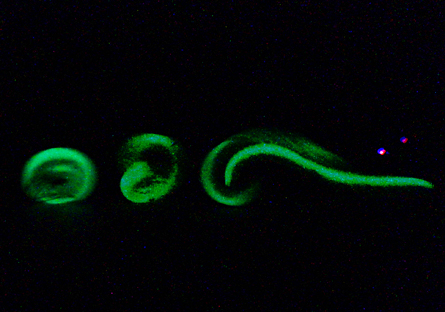Science News
Rockin' Caterpillar Robots
April 27, 2011

If you’re a Science Today regular, you know how much we love bio-inspired gadgets. Nature has millions of years of evolution on its side, why not use its successful functions for technology?
Which leads us to the latest headline, rock and roll robots inspired by caterpillars.
Some caterpillars have the extraordinary ability to rapidly curl themselves into a wheel and propel themselves away from predators. This highly dynamic process, called ballistic rolling, is one of the fastest wheeling behaviors in nature. (You can see a great video of ballistic rolling on YouTube.)
Researchers from Tufts University saw this behavior as a way to give soft robots more speed and power. The results of their study are published today in Bioinspiration & Biomimetics.
To simulate the movement of a caterpillar, the researchers designed a 10cm long soft-bodied robot, called GoQBot, made out of silicone rubber and actuated by embedded shape memory alloy coils. It was named GoQBot as it forms a "Q" shape before rolling away at over half a meter per second.
The GoQBot was designed to specifically replicate the functional morphologies of a caterpillar, and was fitted with 5 infrared emitters along its side to allow motion tracking using one of the latest high-speed 3D tracking systems. Simultaneously, a force plate measured the detailed ground forces as the robot pushed off into a ballistic roll.
In order to change its body conformation so quickly, in less than 100 milliseconds, GoQBot benefits from a significant degree of mechanical coordination in ballistic rolling. Researchers believe this coordination is mediated by the nonlinear muscle coupling in the animals.
The researchers were also able to explain why caterpillars don't use the ballistic roll more often as a default mode of transport; despite its impressive performance, ballistic rolling is only effective on smooth surfaces, demands a large amount of power and often ends unpredictably.
Not only did the study provide an insight into the fascinating escape system of a caterpillar, it also put forward a new locomotion strategy that could be used in future robot development. According to Science News,
Robots similar to GoQBot may someday aid in search and rescue operations that require both crawling through tight, dangerous spaces and moving across flat ground.
Image courtesy of Huai-Ti Lin